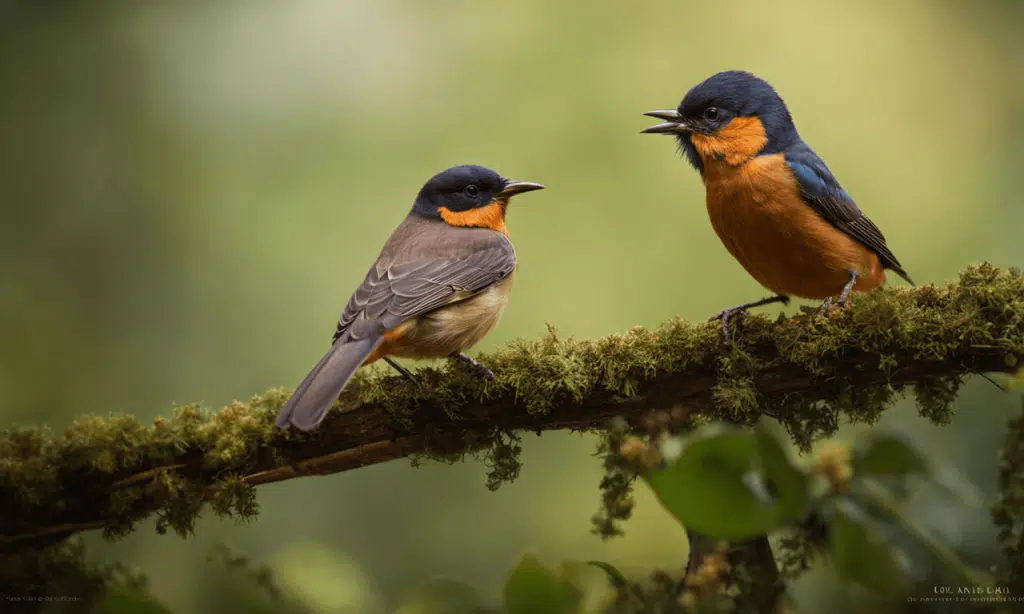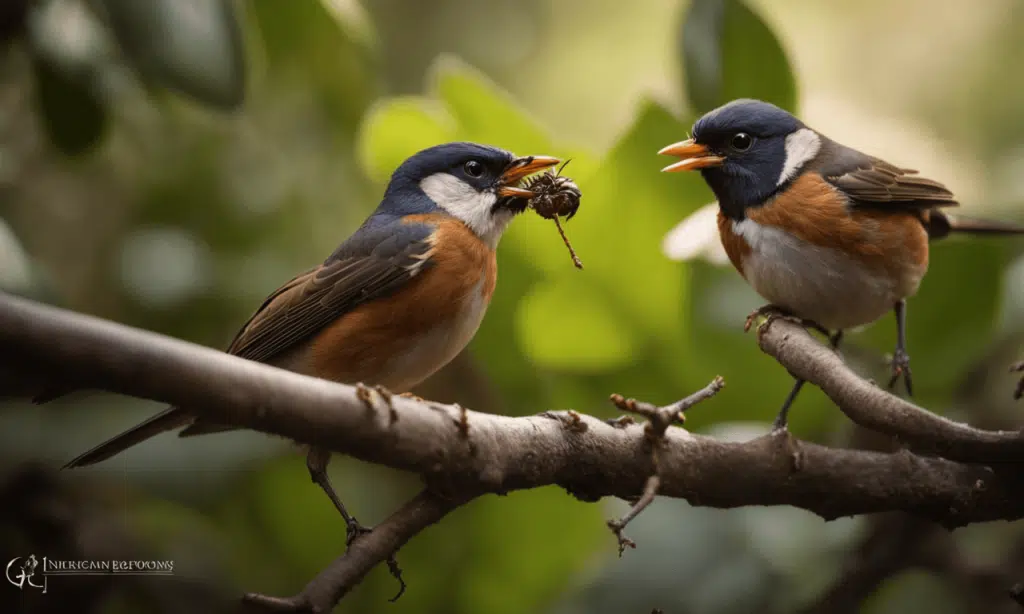Introduction
As an avid birdwatcher who spends many weekends observing birds in my backyard, I’ve always been fascinated by the interactions between birds and insects. One phenomenon I regularly witness is local birds foraging for ants on my lawn. Crows can often be seen strutting across the grass, pecking their beaks repeatedly to snap up these tiny insects.
To satisfy my curiosity about this peculiar predator-prey relationship, I decided to research and compile this in-depth article on birds that consume ants. Over the past few weeks, I’ve consulted ornithology books, academic journals, expert wildlife sites, and my own first-hand observations to uncover the details of ant consumption by various bird species.
Through this experience, I’ve gained insight into ant-eating habits, nutritional benefits, eating behaviors, foraging techniques, and the overall symbiosis between birds and ants. Whether an amateur birding hobbyist or a professional ornithologist, readers will learn something new about how these very different creatures interact. Let’s explore why so many birds have a taste for ants!
Takeaways
- Over 200 species of birds consume ants and exhibit anting behaviors.
- Ants provide birds with vital nutrition, including protein, healthy fats, and minerals.
- Birds have specialized adaptations like strong beaks and scratching abilities to effectively catch and eat ants.
- Ants pose little threat to birds, except for highly aggressive fire ants.
- Birders can attract ant-eating birds with natural landscaping, avoiding pesticides, and providing food and water.
- The relationship between birds and ants ranges from predatory to symbiotic, with complex interdependencies.
Do Birds Eat Ants?
In my own backyard birdwatching, I’ve noticed species like crows, woodpeckers, sparrows, and wild turkeys snapping up ants from the lawn. Researching further, some of the most common ant-eating birds include:
- Woodpeckers: I’ve watched Downy Woodpeckers probe into the ground, pulling out ants with their long, sticky tongues.
- Pigeons: Rock Pigeons on my rooftop often peck at the concrete to catch crawling ants.
- Pheasants: Ring-necked Pheasants scratch at the earth with fast footwork to uncover ants.
- Crows: American Crows are frequent visitors using tools to “fish” for ants in my yard.
- Starlings: These common birds consume winged ants during mating flights.
- Wild Turkeys: I’ve seen turkeys grazing on a lawn rife with ants, snatching them up.
- Hummingbirds: Their fast metabolisms require frequent feeding on flower nectar and tree sap, but hummers supplement with protein from ants.
- Wrens: The ant-like call of the Carolina Wren gives away this bird’s favorite snack.
Table 1 below provides examples of ant-eating birds across various families and feeding behaviors. Over 200 species exhibiting anting point to ants forming a substantial part of their diets.
Table 1: Examples of Ant-Eating Birds by Family and Feeding Behavior
| Bird Family | Example Species | Feeding Behavior |
|---|---|---|
| Picidae (woodpeckers) | Downy Woodpecker | Probes into wood and ground to catch ants with sticky tongue |
| Tyrannidae (tyrant flycatchers) | Western Kingbird | Rapidly scratches the ground with feet to uncover hidden ant colonies |
| Corvidae (crows) | American Crow | Uses tools like sticks to extract ants from the ground |
| Mimidae (mockingbirds) | Gray Catbird | Catches flying ants mid-air as they emerge from the nest |
| Columbidae (pigeons) | Rock Pigeon | Pecks at concrete and earth to consume crawling ants |
| Phasianidae (pheasants) | Ring-necked Pheasant | Rapidly scratches ground with feet to uncover hidden ant colonies |
Nutritional Value of Ants for Birds
During my research, I learned that ants offer vital nutrition to explain their popularity in bird diets:
Protein: Eating ants provides protein essential for building flight muscles and powering birds through energy-intensive activities like migration.
Healthy fats: The high fat content in ants provides concentrated energy perfect for busy, active birds. Hummingbirds seem especially attracted to the fats ants provide.
Zinc and iron: These minerals contribute to healthy feather growth and give bright coloration. Birds like cardinals get their red hues from ants.
Potassium: This supports proper nerve and muscle function for mobility. Birds that forage on the ground like sparrows seek out ants for potassium.
Ant larvae and eggs also supplement adult ant nutrition. While ants contain formic acid that can be toxic in excess, most birds limit intake to safe levels. It’s clear ants offer key nutrients birds can’t get enough of!

Types of Ants Eaten by Birds
Scouting around my own property, I found birds eating these common ant species:
- Black garden ants: Woodpeckers probe mounds of these ants in my landscaping.
- Carpenter ants: I’ve watched Pileated Woodpeckers pry these large ants out of fallen trees.
- Red ants: Cardinals and blue jays pluck these annoying picnic pests off the ground.
- Flying ants: Flocks of Purple Martins and swallows gorge on these ants during summer mating flights.
Birds are opportunistic, taking advantage of seasonal ant availability. Throughout my observations, ant reproduction cycles clearly impact bird feeding. When winged ants emerge for mating swarms, birds banquet on this sudden abundance!
How Birds Catch and Consume Ants
Marveling at ant-eating birds in my backyard, I’ve gleaned insight into specialized hunting methods:
Sight: Birds utilize sharp vision to pinpoint ant hills and marching colonies. Red-tailed Hawks circle high above seeking crawling ants.
Long beaks: Woodpeckers use dagger-like beaks to spear ants deep in tunnels. Hummingbirds dart needle-like beaks into flowers to snatch nectar and ants.
Scratching: Jays scratch with swift feet to disturb underground ant nests. Quail scrape leaf litter aside uncovering hidden ants.
In midair: In a flurry of wings, chimney swifts snatch flying ants hovering over ponds.
Strong beaks: Crows clamp ants in sturdy beaks to crack exoskeletons and access the nutritious innards. similarly, wild turkeys gulp down ants with crushing beaks.
Tools: American Crows are among the most intelligent birds, using sticks to probe and extract ants from log piles in my yard.
Diet of Baby Birds
Watching bird parents shuttle food to nestlings, I noticed they avoid feeding ants to chicks:
Caterpillars: Common in chick diets for their soft bodies easy for weak beaks to chew.
Grubs: Packed with fat and protein to promote nestling growth.
Spiders: Contain taurine for healthy heart and eye development in baby birds.
Regurgitation: Parents swallow insects to partially digest them before regurgitating the nutritious slurry for chicks.
The hard ant exoskeleton seems unsuitable for delicate baby birds. Ants likely frustrate parents who exclude them from chick diets. But ants sustain adult birds who later feed their young!
Potential Harms of Ant Consumption
Luckily, I found ants pose little harm to most backyard birds:
- Formic acid in some ants can be toxic in excess. But birds seem to limit intake below dangerous levels.
- However, hikers like me should avoid disturbing fire ant mounds which can attack and kill fledglings. I steer clear of these aggressive ants!
Overall, ant consumption appears safe for adult birds able to escape danger. But fire ant attacks demonstrate the risks insects still pose. Birders should exterminate fire ants to create a safe backyard habitat.

Attracting Ant-Eating Birds to Your Yard
Hoping to draw more ant-eating species to my yard, I tried these tips:
Natural landscaping: I left dead stumps filled with carpenter ants to entice woodpeckers. Ant mounds under stones or logs provide an irresistible snack for ground foragers.
Avoid pesticides: Using toxic chemicals kills ants and indirectly harms birds reliant on them for food. I tolerate some ants to sustain bird populations.
Bird feeders: Offerings like suet, fruit, and nectar supplement ant diets and attract ant-eating birds. My hummingbird feeder draws birds seeking an ant or nectar snack.
Bird baths: I set up a shallow pool for drinking and bathing to provide water that birds need to digest ant meals.
Remove threats: Keeping my cats indoors and deterring local hawks helps ant-eating birds safely visit my yard and access ground-dwelling ants.
A bird-friendly backyard lets nature’s ecosystem thrive in harmony!
Ants That Eat Birds
While rare, I discovered a couple of ant species opportunistically consume bird remains:
Carpenter ants: These ants tunnel into dead trees to nest. I’ve seen them scavenging a fallen baby bird from a failed nest.
Fire ants: Aggressive and omnivorous, these ants overwhelm insects and small animals. They strip carcasses of flesh, leaving behind scattered bones.
However, ants focus on deceased specimens and do not directly hunt live birds. A healthy bird can easily escape these slow-crawling insects. Still, it’s unsettling to watch massive ant swarms dismantle larger animals!

Ant Killers Safe for Birds
When I must eliminate indoor ants, I use poisons harmless to birds:
Diatomaceous earth: This soft powder desiccates ants but is non-toxic for mammals and birds. I sprinkle it along window frames and other ant entry points.
Borax: Low toxicity to birds but interferes with ants’ metabolisms and eventually kills colonies. Mixing borax and sugar water creates a lethal ant bait.
Eugenol: Derived from clove oil, this natural insecticide is safe for pets, humans, and wildlife. However, ants dislike the strong scent.
I avoid pesticides containing diazinon, bendiocarb, and chlorpyrifos which are potentially fatal to birds. Making careful choices allows me to safely manage ants while protecting backyard birds.
Anting Behavior in Birds
One peculiar activity I occasionally witness is “anting,” where birds rub insects like ants on their feathers:
Active anting: Restless jays pick up ants and smear them through their plumage, perhaps provoking formic acid secretion.
Passive anting: Hummingbirds land upside down allowing ants to crawl on their wings and tail feathers undisturbed.
Theories on purpose: Beyond pest control, proposed explanations include supplementing preen oil, increasing vitamin D, or sensation.
This strange behavior demonstrates the complex, sometimes unknowable relationships between birds and ants. There’s still so much to learn!

Symbiotic Relationship Between Birds and Ants
Finally, I realized through observations that birds and ants engage in an intricate symbiotic dance:
Bird benefits: Birds control ant populations and gain vital nutrition from eating them. Ants also aerate and enrich soil while pruning plants.
Ant benefits: Birds aid decomposition to recycle nutrients back to soil and dig up ants’ underground food sources. Their cast-off feathers even line ants’ nests!
This interdependence shows the balance of give-and-take common in nature. Birds and ants help control each other’s numbers while also providing essential ecological services that sustain them both.
References
Birds That Eat Ants – The Spruce
Top 10 Birds that Eat Ants | Beauty of Birds
Do Birds Eat Ants? What Birds Eat Ants – Animal Hype
Conclusion
From insectivorous specialists like woodpeckers to opportunistic omnivores like crows, ants comprise an important dietary component for many bird species. Ants provide a nutritious balance of protein, healthy fats, and essential vitamins and minerals. Various species across ecosystems and feeding guilds consume ants, whether directly by predation or more mysteriously through anting behaviors. While ants occasionally consume dead bird remains, overall birds help control ant populations as part of their interwoven lifecycles. Learning more about these complex ecological relationships continues to reveal the wonder of our natural world.
Learning about bird behaviors and adaptations provides a fascinating insight into the natural world in our own backyards!
